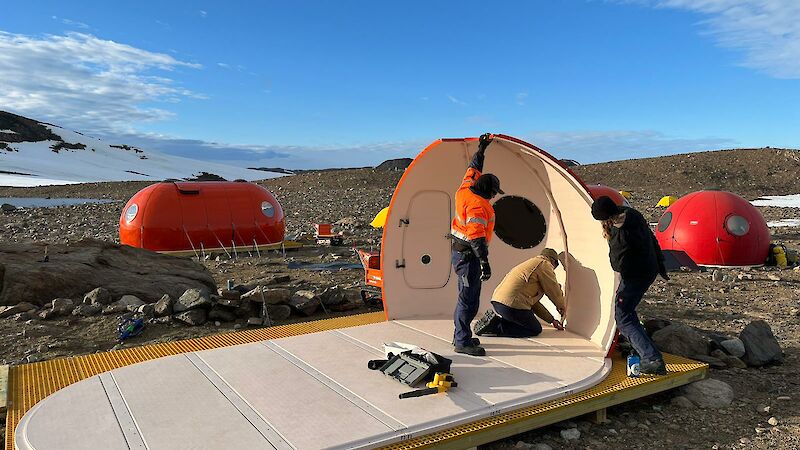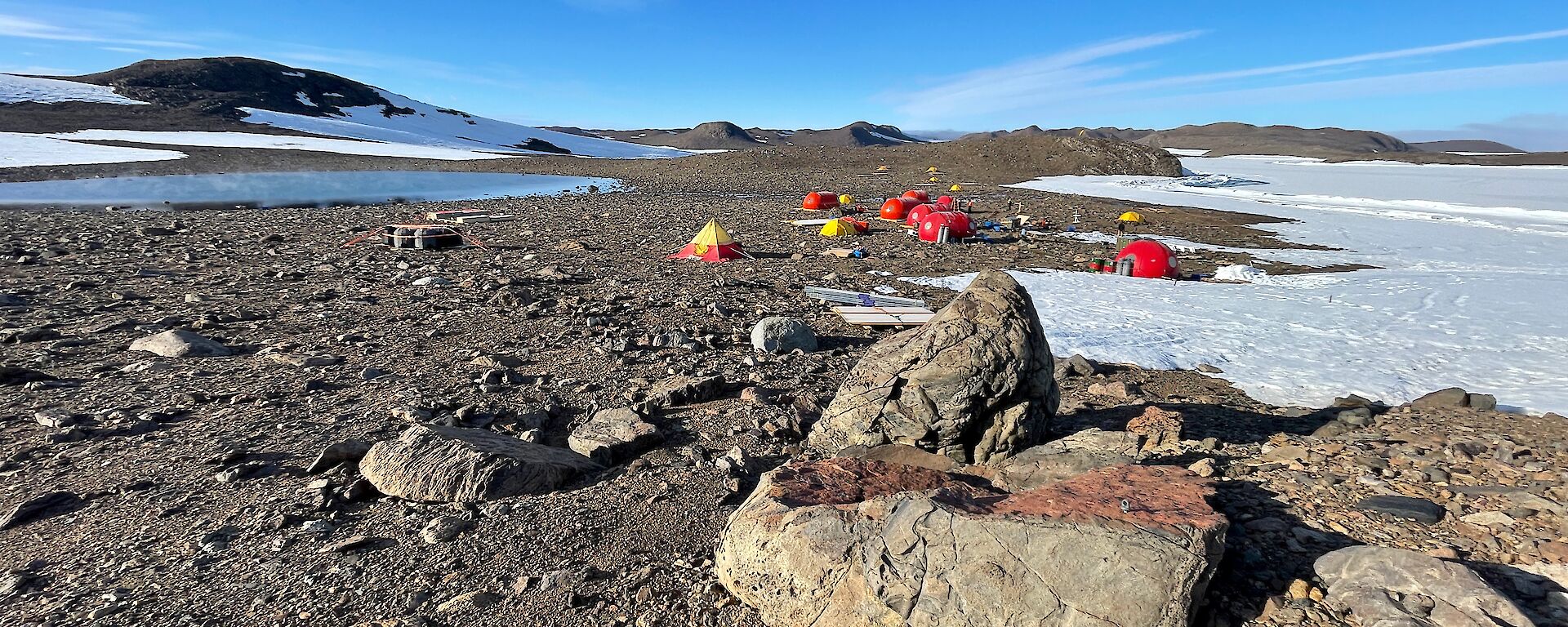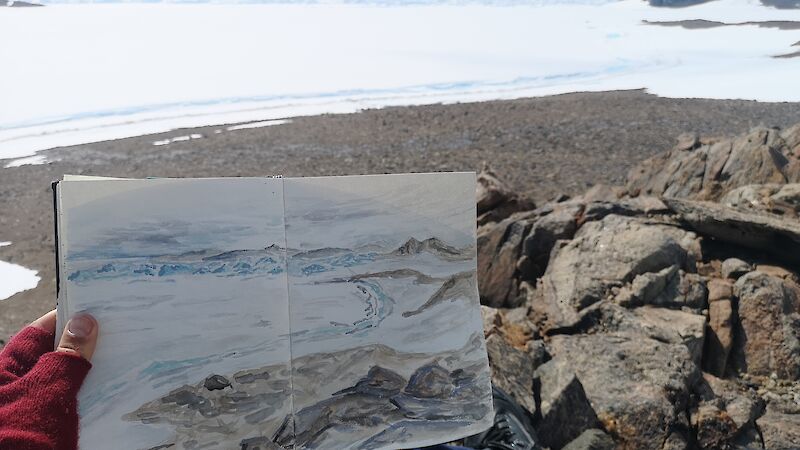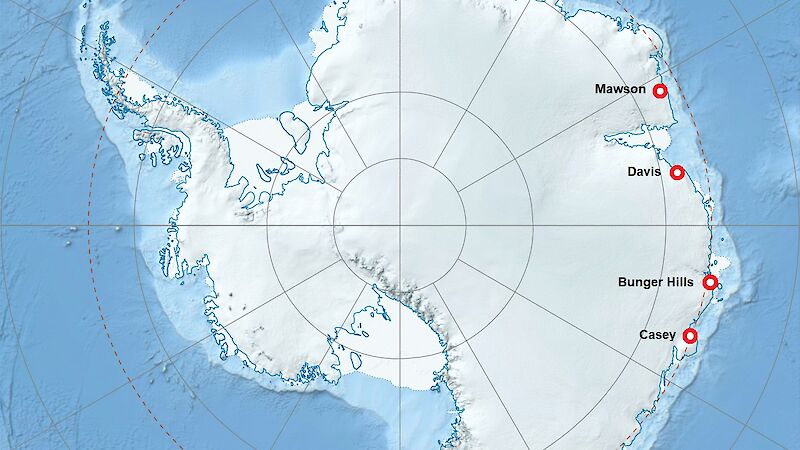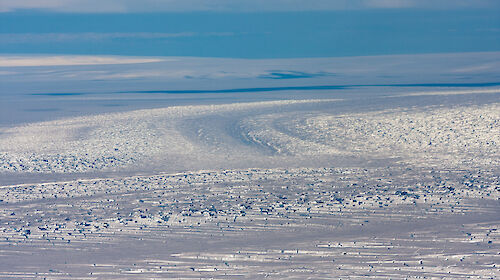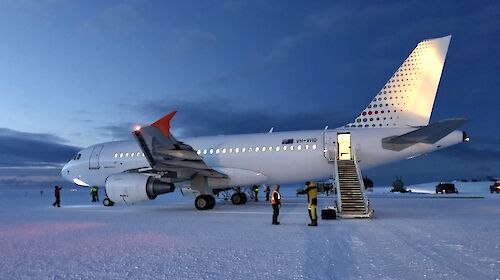Building melons
Field Leader David Knoff said the five-person team worked hard in challenging conditions to build timber platforms, assemble new huts and restore old ones at the co-located seasonal Edgeworth David Base.
“All up we prepared four new ‘melon’ huts, ten tent platforms and a foundation platform for the main kitchen tent,” Mr Knoff said.
“We had a great team working in really challenging conditions, but we still managed to celebrate Christmas, News Year’s Eve and three birthdays.
“But the best celebration we had was the day we finished. We came here to do a job, we did it, and we’ve set the scientific team up for success next season.”
